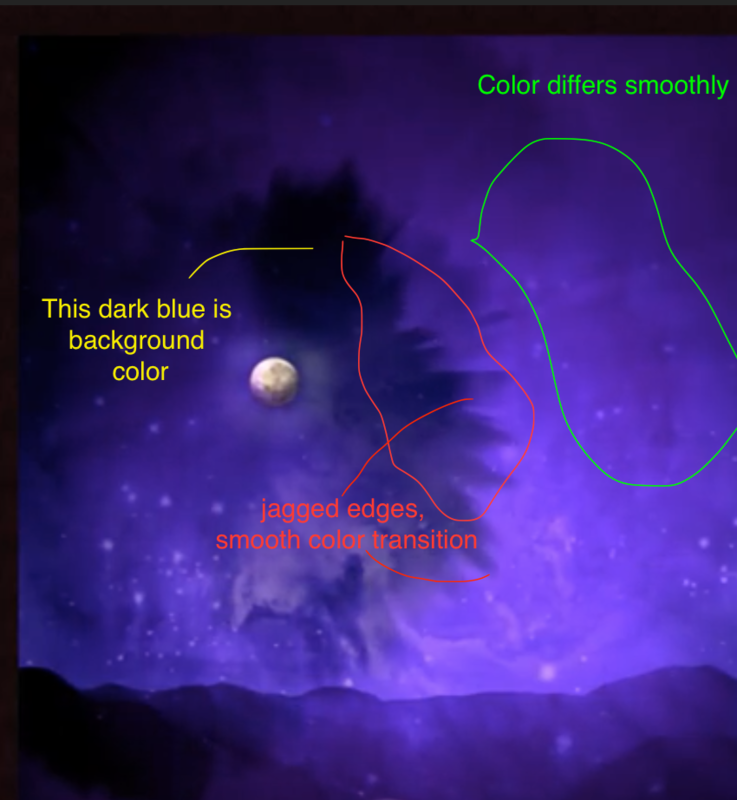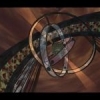at 1:38 - 1:42, purple things (I think this is particle system) that come off from the moon.
Someone else had decompiled the game in the past, and the assets shows that the dark blue area around the moon (after purple things come off) is just background image. So my assumption is that there are many of those 'purple things', that use additive blending to give different density of 'purpleness'.
The details that I'm looking at are:
- As those purple things come off completely from the moon, it forms jagged shapes
- At the edge of those jagged shapes, color blends smoothly instead of sharp turn between purple and dark blue(I know how to do it with simple shapes, but in here, the jagged shape itself constantly changes)
- further from edge between dark blue and purple, at the light purple direction, the density of purple is nice and smooth
I'm pretty familiar on animating objects by manipulating transform, but this one seems like a lot of color works with programatically created shapes, any idea?
Here's a picture to clarify









